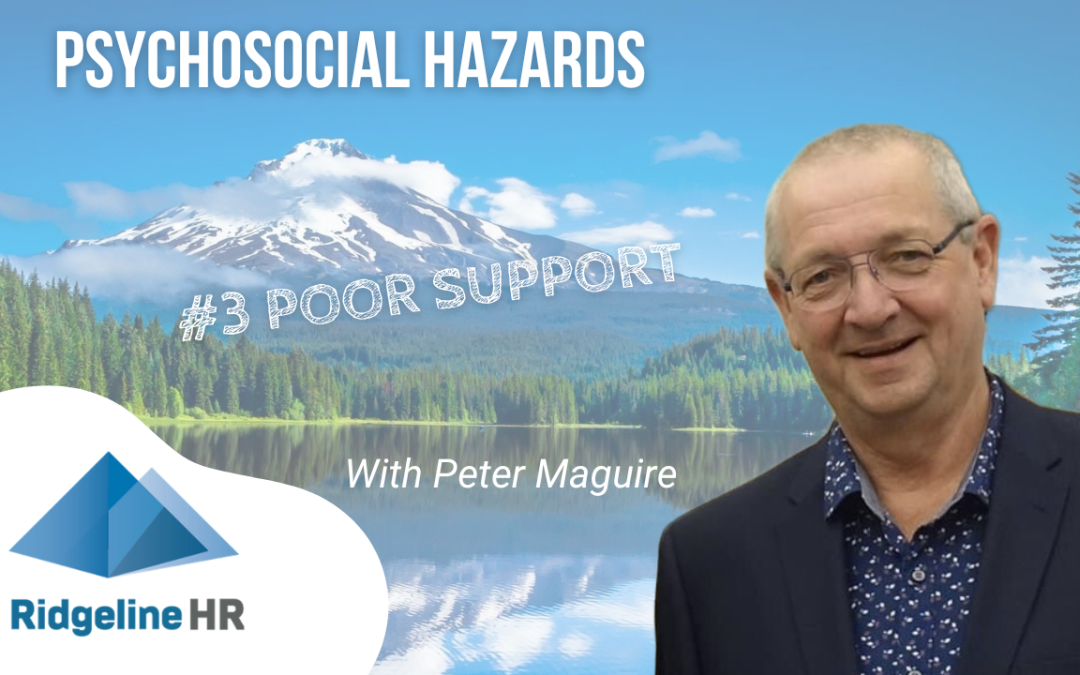
Time to get serious about sexual harassment
Latest News & Events
Time to get serious about sexual harassment

In December 2022, a new positive duty on employers and persons conducting a business or undertaking (PCBUs) to eliminate workplace sex discrimination and harassment commenced.
The Anti-Discrimination and Human Rights Legislation Amendment (Respect at Work) Act 2022 (Cth) amended the Sex Discrimination Act 1984 (Cth), introducing a positive duty on employers and PCBUs to eliminate:
- workplace sexual harassment, sex discrimination and sex-based harassment;
- conduct that amounts to subjecting a person to a hostile workplace environment on the ground of sex; and
- certain acts of victimisation.
Now employers and Persons Conducting a Business or Undertaking (PCBUs) have a legal obligation to take proactive and meaningful action to prevent all of the above offending behaviours from occurring in the workplace or in connection to work.
This is a big step up from what had been the case where it was a complaints-driven process – action was only required if someone made a complaint after the fact ie after the sexual harassment had already occurred.
Respect@Work
The Australian Human Rights Commission has established a website with lots of resources to help organisations to learn about sexual harassment and what the positive duty means. See https://www.respectatwork.gov.au.
The first step in the process of exercising your positive duty is to actually understand what the issues are and what your obligations to exercise the positive duty mean in practice. You then need to conduct a risk assessment to ascertain whether there are any risks that need to be eliminated or controlled relative to sexual harassment and the other offensive behaviours noted above.

Above is the risk management model published via Respect@Work which is an adaptation from Safe Work Australia’s model for managing work health and safety risks.
There are two points with this which are important to note:
- Workers must be consulted at every step in the process and the best results will be obtained by educating and engaging them in the mission to eliminate sexual harassment from your workplace; and
- This is a continuous process – not something that you just do once and then you have ticked the box. The positive duty means that you must keep assessing risks and the effectiveness of control measures and making necessary adjustments on an ongoing basis.
Please note that sexual harassment also features as one of the psychosocial hazards in respect of which Australian organisations are progressively being required to deal with as a workplace health and safety positive duty.
What is sexual harassment?
Australian law states that sexual harassment occurs when:
- a person makes an unwelcome sexual advance, or an unwelcome request for sexual favours, to the person harassed; or engages in other unwelcome conduct of a sexual nature in relation to the person harassed;
- in circumstances in which a reasonable person, having regard to all the circumstances, would have anticipated the possibility that the person harassed would be offended, humiliated or intimidated.
Examples of behaviour that constitutes sexual harassment include:
- inappropriate physical contact;
- intrusive questions about a person’s private life or physical appearance;
- sharing or threatening to share intimate images or film without consent;
- unwelcome touching, hugging, cornering or kissing;
- repeated or inappropriate invitations to go out on dates;
- sexually suggestive comments or jokes that offend or intimidate;
- requests or pressure for sex or other sexual acts;
- sexually explicit pictures, posters or gifts;
- actual or attempted rape or sexual assault;
- being followed, watched or someone loitering;
- sexually explicit comments made in person or in writing, or indecent messages (SMS, social media), phone calls or emails—including the use of emojis with sexual connotations;
- sexual gestures, indecent exposure or inappropriate display of the body;
- unwelcome conduct of a sexual nature that occurs online or via some form of technology—including on virtual meetings;
- inappropriate staring or leering;
- repeated or inappropriate advances on email or other online social technologies.
In determining whether an advance, request or other conduct may be sexual in nature, the intention of the alleged harasser is not relevant. An advance, request or other conduct may be sexual in nature even if the person engaging in the conduct does not have a sexual interest in that person or is of a different sexual orientation to the person harassed.
Equally, the behaviour may be unwelcome to a person even if it is accepted or tolerated by others or is part of the culture of the organisation.
As to whether the behaviour offend, intimidates or humiliates someone, that also is a subjective test – it is about the how a person perceives and is affected by the behaviour and about how a reasonable person could expect that to happen.
What are the drivers of sexual harassment?
There are 4 key drivers of sexual harassment noted on the Respect@Work website. They are:
- Condoning of sexual harassment against women (are these behaviours justified, excused or trivialised in your workplace?)
- Men’s control of decision making in public and private life (how well represented and how much of a voice do women have in management decisions in your workplace?)
- Rigid adherence to gender roles and stereotyped constructions of masculinity and femininity (in your workplace, are there any perspectives that some jobs are best done by men and some best done by women?)
- Male peer relations that emphasises aggression and disrespect towards women (in your workplace, is there a culture of sexist language or jokes or commentary that is disrespecting of women?)
The questions posed above are just a few of those you need to be asking.
The Exposures
From December 2023, the Australian Human Rights Commission will be able to enter workplaces to inspect them for issues of sexual harassment and will be able to initiate prosecutions and penalties of offending employers.
Workplace Health and Safety authorities around the country are progressively becoming able to do likewise via legislation for PCBUs to have a positive duty to eliminate or control psychosocial hazards.
The Fair Work Commission already had a jurisdiction in which workers could seek orders to stop sexual harassment. As from March 2023, they also have a new jurisdiction where workers can take complaints of sexual harassment and seek compensation.
So, yes, it is time to get serious about stamping out sexual harassment.
Note: much of this content has been drawn from the Respect@Work website.
Need help?
-
Give us a call on 1300 108 488 to arrange your free first consultation to see how we can help with advice and support on this or any other HR matter
CONTACT US
Ridgeline Human Resources Pty Ltd
ABN : 24 091 644 094
enquiries@ridgelinehr.com.au
0438 533 311
PARTNER LINKS
QUICK RESOURCE LINKS









